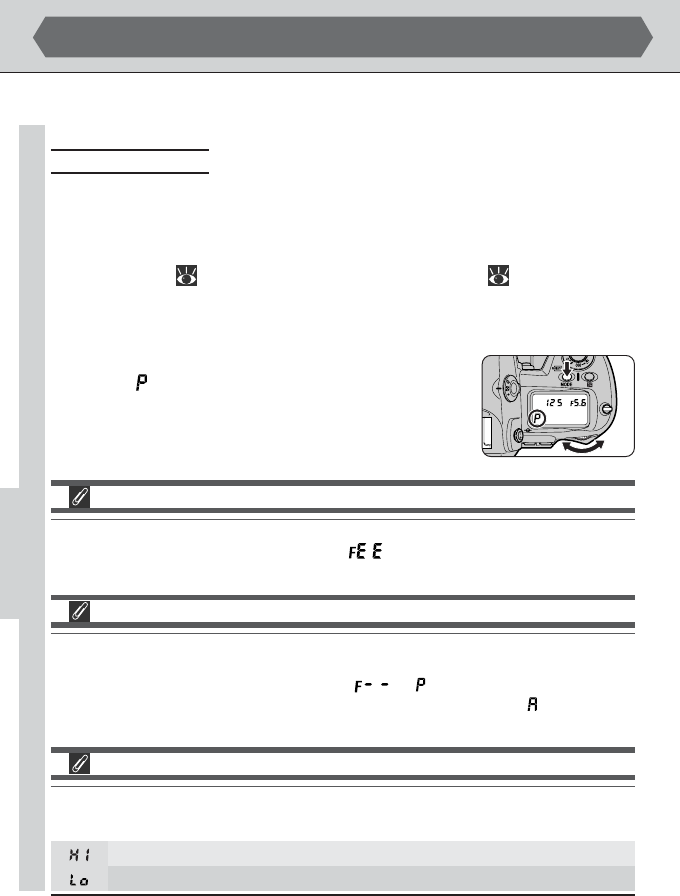
84
ADVANCED PHOTOGRAPHY—EXPOSURE MODE
Exposure Mode
D1X offers a choice of four manual exposure modes: programmed auto, shutter-
priority auto, aperture-priority auto, and manual.
Programmed Auto
In programmed auto, the camera automatically adjusts shutter speed and aperture
according to the exposure program (see opposite) to produce optimal results. This
exposure mode is recommended for snapshots and other unplanned situations that
require a quick response. Programmed auto can also be used with program shift,
auto bracketing (
pg. 100), and exposure compensation ( pg. 98) for more
demanding shooting situations. Programmed auto is only available with CPU lenses.
To take photographs in programmed auto:
1
Pressing the MODE button, rotate the main command
dial until is displayed in the control panel on top of the
camera.
2
Frame a photograph and shoot.
Lens Aperture Ring
If the lens aperture ring has not been set to the minimum aperture, the viewfinder and control
panel on top of the camera will show a blinking , and the shutter release will be disabled.
This does not apply in the case of type G lenses, which do not have an aperture ring.
Non-CPU Lenses
If programmed auto is selected when a non-CPU lens is attached, the exposure mode will
automatically be set to aperture-priority auto (A). The aperture display in the viewfinder and
the control panel on top of the camera will show the in the control panel on top of the
camera will blink, and the exposure-mode display in the viewfinder will show to indicate that
aperture must be set manually using the lens aperture ring.
Exposure Indicators
If the subject is too bright or too dark to allow correct exposure, one of the following indica-
tors will appear in the viewfinder and the control panel on top of the camera:
Subject too bright; use an ND filter.
Subject too dark; use a flash.


















